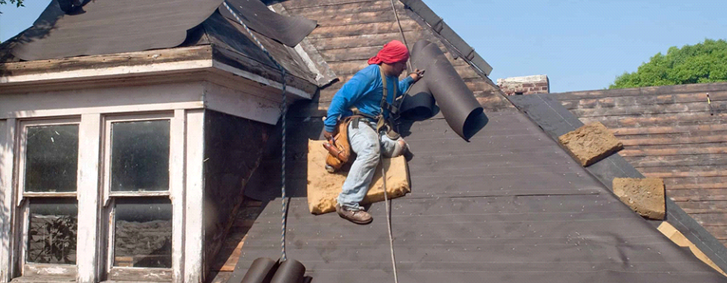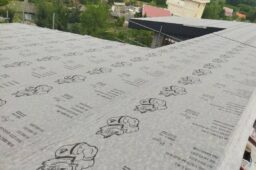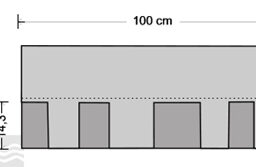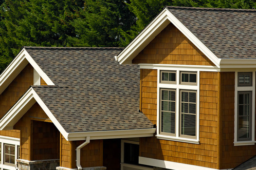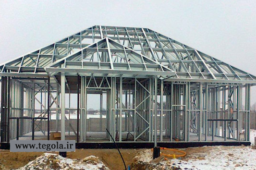:Introduction
The deterioration and decay of roofs and walls is a significant problem that can occur in any building. Even a small failure in them can damage the entire structure. Therefore, throughout history, humanity has sought ways to prevent this from happening. Additionally, damage to a building’s roof and walls can result in energy wastage. Given the current global energy crisis, the use of vapor barrier insulation is now considered necessary to prevent energy wastage, building damage, and additional costs.
As you know, moisture and heat move upwards in a building due to its lower density. Due to their specific structures, gable roofs, false Kenaf panels, and similar features are suitable locations for moisture accumulation. This is the primary cause of damage and wear to walls and roofs. The primary function of vapor barriers is to prevent moisture from damaging the building. Read on to learn more about the performance of this insulation.
?What is Vapor Barrier Insulation
Simply put, vapor barrier insulation is an impermeable barrier used to prevent water vapor and moisture from entering walls, ceilings, and floor cavities. People who live in closed houses increase the humidity of the air during the day by doing daily tasks such as taking a shower and using appliances like a washing machine. High air humidity causes numerous problems, such as mold growth, rotting of building materials, and ultimately, building destruction. Vapor barrier insulators control air humidity and prevent such problems from occurring.
?What are the Characteristics and Structure of Vapor Barrier Insulation
This insulation consists of at least two layers of polyester and one layer of polyethylene. The polyethylene layer acts as a breathable layer and has nano openings that, with the action of sealing and moisture, cause exhalation in the building. In fact, the polyethylene layer removes moisture collected in the building using these openings. This feature makes vapor barrier insulation unique compared to other moisture insulation, such as Izogam. The polyester layers in this insulation have antibacterial properties and protect the polyethylene layer.
This insulation is usually available in the market in rolls with a length of 50 meters and a width of approximately 1.6 meters. They also come in different thicknesses and weights. But, in general, they are marketed in four main sizes, which are:
G100 per M^2, mainly used for light structures, walls, and false ceilings.
G120 per M^2, this grammage can also be used for light structures, walls, and false ceilings in areas with low relative humidity.
G120N per M^2, this grammage can also be used for light structures, walls, and false ceilings in areas with low and medium relative humidity due to its nano properties.
G140 per M^2, this grammage can also be used for light structures, walls, and false ceilings in areas with moderate relative humidity.
G140N per M^2, this grammage can also be used for light structures, walls, and false ceilings in areas with high relative humidity due to its nano properties.
G160NH per M^2, this grammage can be used for all regions and places. It is a product that can compete with all products produced abroad, using both hot melting and nano technology, and consists of Two layers of nano non-woven polyester + two layers of breathable polyethylene + one layer of plain non-woven polyester.
?What Areas are Vapor Barrier Insulation Suitable for
If you live in a temperate climate, you definitely need vapor barrier insulation. Areas with these climate conditions have high humidity in hot seasons and require strong heating systems to warm buildings in cold seasons. This means that there is a possibility of water vapor and moisture accumulation in the building throughout the year. Cold regions also need these insulators due to the high use of heating systems.
What Walls Need Vapor Barrier Insulation
If a building’s walls are constructed from materials like brick, stone, plaster, fiber cement, or blocks, there is a higher likelihood of water vapor and moisture seeping through any gaps and causing damage to the structure. Therefore, it is crucial to install a protective layer on these walls. Typically, it is necessary to use insulations on all exterior walls in areas with humid climates or cold regions. In addition to external walls, applying vapor barrier insulation to attics, ceilings, and floors can prevent damage to your home.
There are three categories of vapor barrier insulation, and engineers use “Sd” to refer to their permeability percentage to moisture. Sd indicates the amount of heat that passes through the insulation in a given time period and helps evaluate insulation performance. The types of insulation are:
W1 level vapor barriers: This category of insulation includes materials such as rubber membrane, polyethylene sheet, and metal sheet, with a measured Sd of 0.03 or less.
W2 level vapor barriers: The Sd of this type of insulation falls between 0.03 and 1. Expanded polystyrene, asphalt paper, and paper are Level II vapor barriers.

